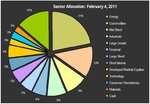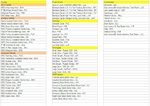Thank you for your comprehensive thread Boston. It makes a nice change from the mass of intraday trading journals.
Would you be kind enough to expand on how you use the basic Standard Deviation / Price in pyramiding please.
Thanks
Jason
Thanks for the question and for the good feedback Jason.
Let me first go a little into the “reason” why I use the “Std Dev / Price” (SD/P) variable. As you know, setting a pyramiding decision based on a fixed percentage change threshold could result in buys (same logic would apply to a sell / short decision) not reflective of the underlying “opportunity.”
Example: Suppose assets A and B are both priced at $10. We could set a threshold that signals a pyramiding buy at say, +5%. Here you would purchase a second block at a price of $10.50. Now, A and B may be similar assets, in which case an undiscriminating 5% may work, or they may be significantly different assets (say technology and bonds), with significantly different risks, in which case we should discriminate. In the latter example you would want to consider a volatility measure such as the standard deviation. The bonds’ low volatility may result in a buy signal at, say, $10.20, while the high volatility of the Technology asset could result in the buy signal coming in at $11.00. Considering volatility in this fashion could help in aligning risk amongst different asset types.
That said Jason, the main technical indicator I use in pyramiding is not the SD/P but the Average True Range (ATR). Here, one would use different ATR multiples, depending on the time-scale of the system; a low ATR multiple (1-2?) for systems of short time-scale (days), higher ATR multiples (10?) for longer systems. I’m in the middle of the road here.
My main use of the SD/P variable is as a secondary metric, part of an algorithm I use in
prioritizing entries, exits and pyramiding; I use this algorithm only when faced with multiple signals. This algorithm (also outlined in the
“Week 5” post), considers the SD/P, the distance between price and MA’s (the greater the better), and the distance between price and 52-week highs (the smaller the better).
This post may be of interest if you're interested in the math behind the SD/P metric.
Best,
Boston




